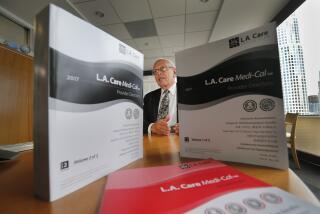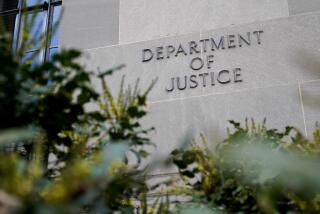Case Unravels Against Alleged Fraud Ring
- Share via
Three years ago, they were charged with running one of the largest workers’ compensation fraud rings that Los Angeles had ever seen.
The ring, authorities said, contacted thousands of recently unemployed workers and quickly referred them to medical offices where millions of dollars in needless procedures were allegedly performed by chiropractors and others.
But although one of the purported leaders of the group later entered a plea bargain to avoid a trial, charges were eventually dropped against three other defendants. The case against a fifth also was dismissed. And this week, the district attorney’s office decided not to retry the five remaining defendants after a jury deadlocked two weeks ago in favor of acquittal.
The conclusion of the case was viewed by some as proof that the district attorney’s office should never have pursued the prosecution.
“I don’t think this case should ever have been tried,” said defense attorney Charles English, who represented one of the principal defendants.
But Deputy Dist. Atty. Edward Miller, who was brought into the case after it was filed, insisted that the decision to prosecute was always the right one--regardless of the jury’s impasse.
“It was a case that had to be tried, no doubt in my mind,” Miller said Wednesday.
Miller also argued that the conclusion, although disappointing, was not surprising given the complex nature of the charges.
On Tuesday, the prosecutor told Superior Court Judge Morris B. Jones that the district attorney’s office had decided not to retry Robert Ball, 37, of Beverly Hills; Arthur Carlisle, 39, of Monterey Park; Charles Valyan, 47, of Pasadena; Reginald Mason, 29, of Los Angeles; and Vincent Williams, 33, also of Los Angeles.
“In the trial,” Miller said Wednesday, “we had put on all the available, admissible evidence [and] it was my opinion that in a retrial of this matter, the quality of our evidence would only worsen.
“And given the vote of the jury in favor of acquittal,” Miller said “it was not likely a conviction would be obtained.”
During the six-week trial, prosecutors argued that the California Employment Protection Agency would call people at their homes to find out if they had suffered injuries or stress on the job.
Later, authorities said, the unemployed workers were referred to Ball’s office and he would refer them to chiropractors Carlisle and Valyan or psychiatrist George Rowell, 55, of Lynwood. The medical offices, the prosecution alleged, were paying for patient referrals through a collection agency, Drexel, Melton & Lynch, run by Mason.
“It was definitely a sophisticated operation,” prosecutor Miller said of the case, which resulted in grand jury indictments in January 1994.
But on July 8, a jury ended two weeks of deliberations by deadlocking 11 to 1 in favor of acquitting five defendants. (Charges already had been dropped against Ball’s brother, Reginald; Ana Fuentes, 23, of Los Angeles; and Samuel Calvert, 29, of Compton. Charges were dismissed against Anna Rice Harmon, 30, of Los Angeles).
“These are very difficult cases to prove,” Miller said. “Here you had a crime where the thrust of evidence was that they were buying and selling patients.”
But although the case underscored the complexity of prosecuting white-collar defendants, Miller said, it also included enough evidence to persuade one significant defendant--Rowell--to enter a plea that resulted in a two-year prison sentence.
“So while we didn’t win this case, as far as we’re concerned the most significant defendant pleaded no contest. . . . We got the big fish,” Miller said.
And even if the jury did not reach guilty verdicts on the others, Miller argued that the evidence--and Rowell’s plea--were strong evidence of a conspiracy.
“Rowell pleaded because he was obviously involved in illegal conduct,” Miller said. “People don’t agree to go to prison if they are innocent.”
More to Read
Sign up for Essential California
The most important California stories and recommendations in your inbox every morning.
You may occasionally receive promotional content from the Los Angeles Times.










